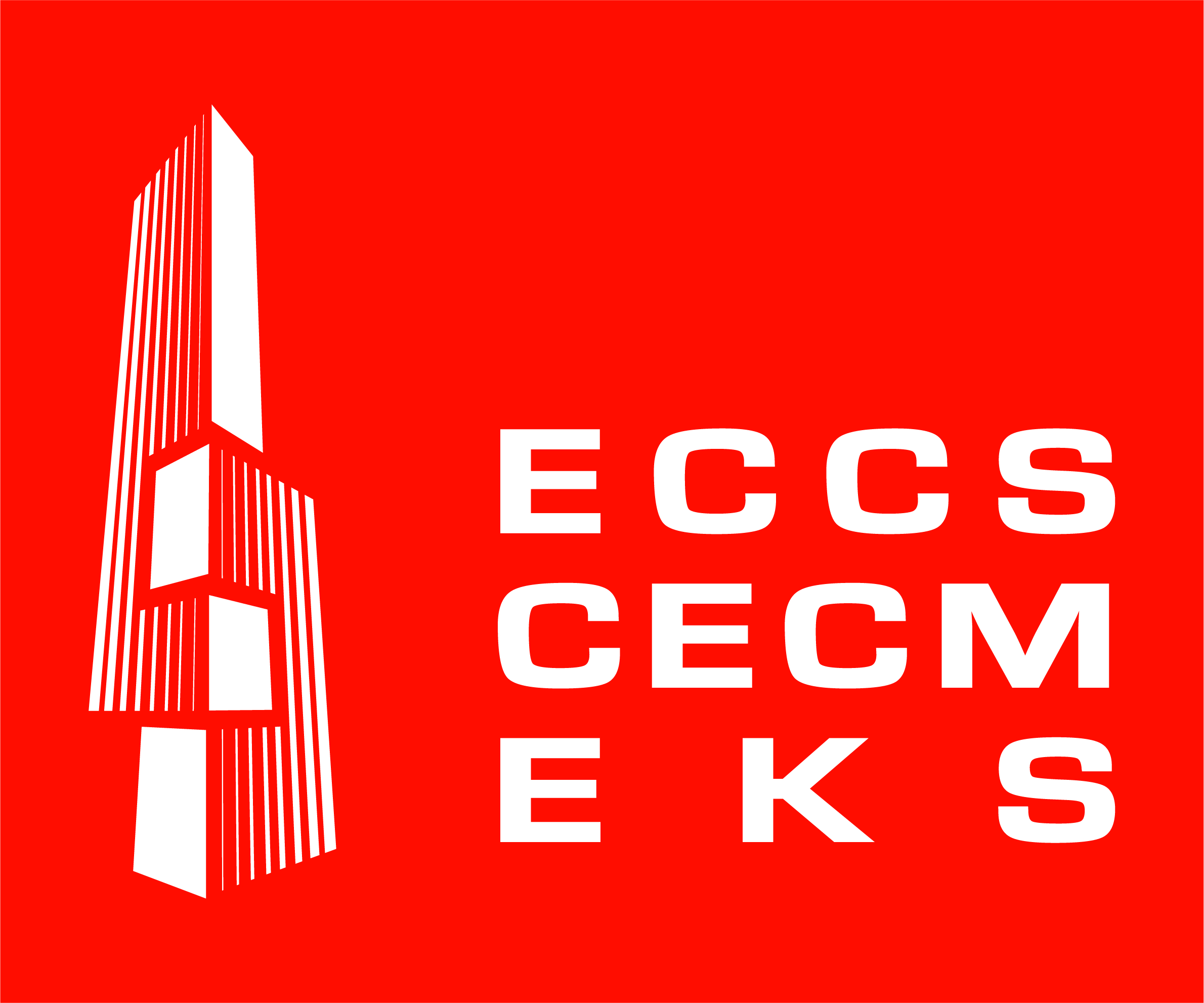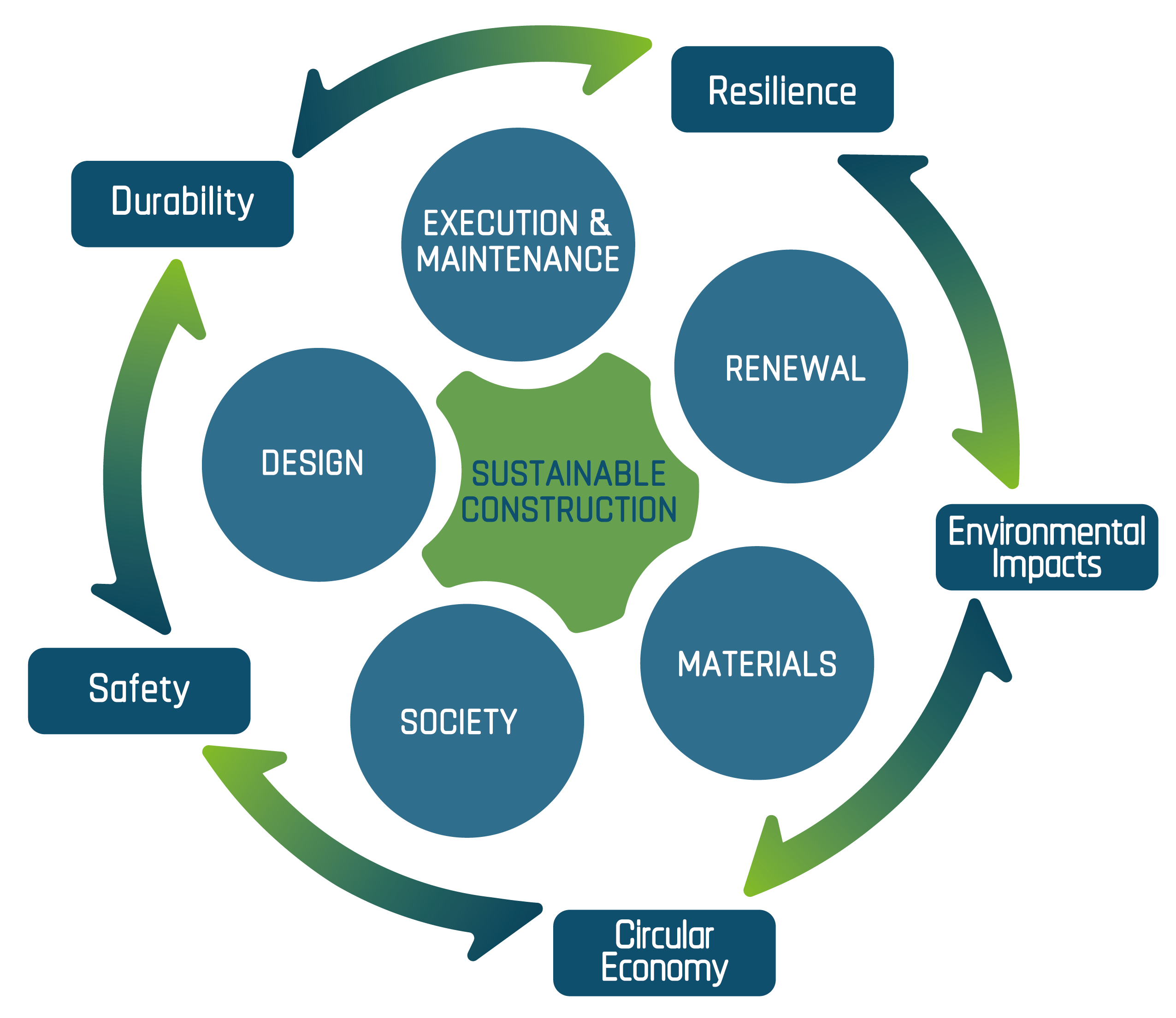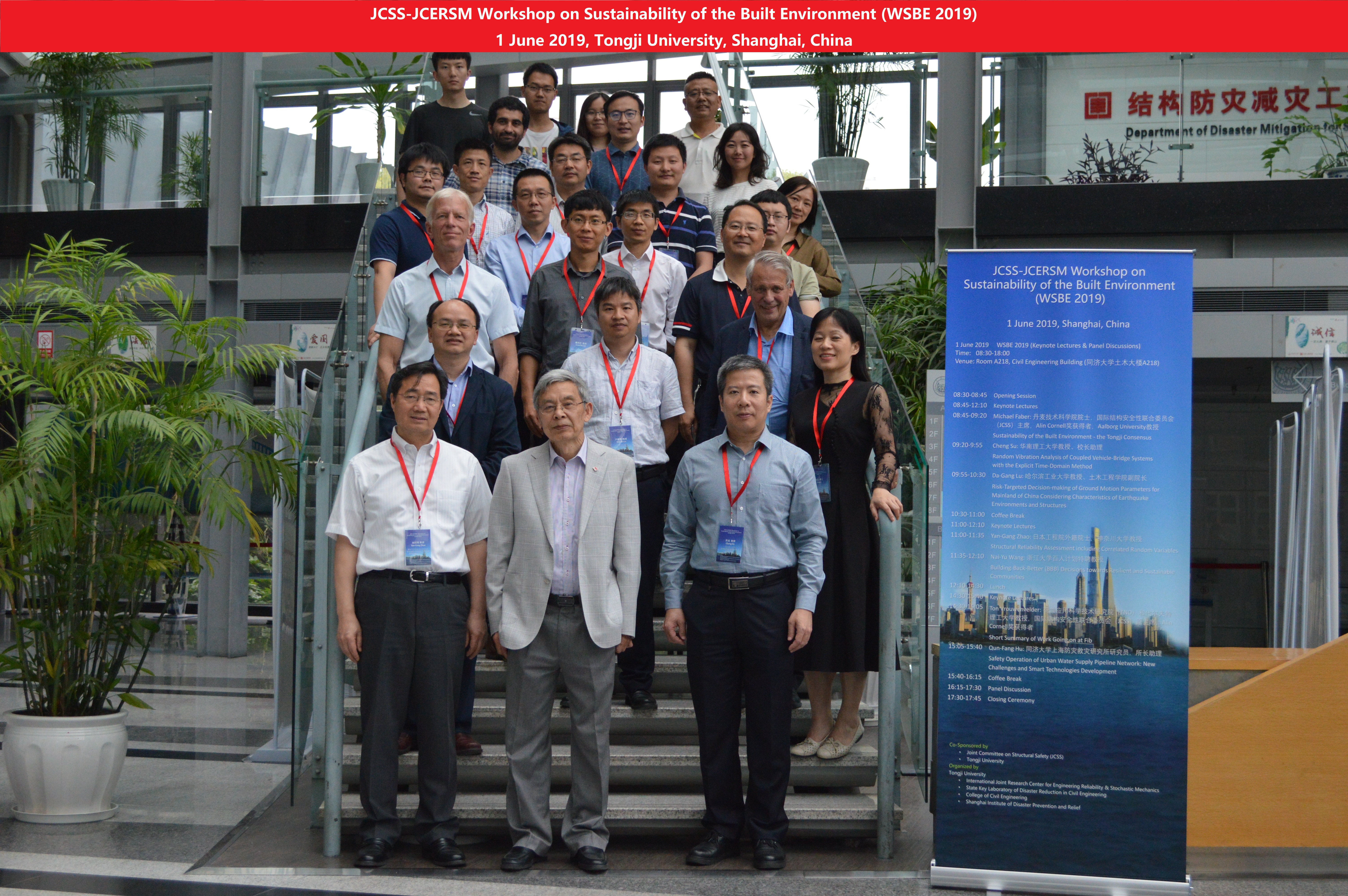GLOBE - Global Consensus on Sustainability in the Built Environment

 |  |  |  |  |
| GLOBE Eng pdf | GLOBE summary Eng pdf | GLOBE in other langagues | GLOBE PDF presentation | Support GLOBE | List of supporters |
Objective and main messages of GLOBE
The objective of the Global Consensus on Sustainability in the Built Environment – GLOBE - is to direct the attention of the global community, politicians, industry leaders, and societal decision-makers to the critical importance of the built environment for sustainable development at global and local scales. Appropriate actions by all parties addressed are urgently required to ensure that the built environment of the future is resilient, adequately safe, and socially, environmentally and economically sustainable.
Nothing less than a transformative and united worldwide effort from all stakeholders of the construction sector is required for human society to be successful in sustainable development, and in the mitigation of the disastrous consequences of climate change at global and local scales.
The international community, governments, international and national engineering associations, and industries across the construction sector are hereby urged to contribute, and to give their voice to support GLOBE. Expression of support is possible through this link: GLOBE support. See list of supporters here.
The subscribers of GLOBE fully appreciate that the built environment is much more than structures and infrastructures – it encompasses and involves society in general, the environment and a broad range of industries and professions. It is the intention that the GLOBE initiative shall evolve over time to account more holistically for all stakeholders of the built environment, and your contributions in support of this are sincerely invited and hoped for.

The sustainability challenge for the built environment
The construction sector is currently responsible for more than 20% of global annual CO2 equivalent emissions. Between a quarter and half of these emissions are due to the production of cement, while the rest result from the manufacture of other construction materials, transport, and construction processes. Ongoing operation and maintenance of buildings represents almost an additional 30% of global CO2 equivalent emissions.
Global population growth and rapid urbanization demand enormous construction activities and materials use. Within the next ten years, the overall global land use requirement of the built environment is expected to double. In addition, it is expected that in more developed economies infrastructure and maintenance of structures will significantly increase. Current practices for the management of construction and structures are far from sustainable. If these are not changed, the emissions from the construction sector alone will jeopardize the achievement of the objectives of the Paris agreement.
In comparison to other industries, the construction industry is unique. In many countries, it contributes more than 10% of the national Gross Domestic Product, and is organized in a decentralized way with a vast number of organizations and participants. There is little or no integrative organization between service providers or owners and clients. In addition, the focus of the industry on budgets and efficient delivery of services has created an environment where applied technology enhancements are incremental. Often, limited attention is given to material consumption. Finally, the international standards, codes, and guidelines that govern the design and construction of the built environment evolve too slowly to keep pace with rapidly increasing technological advances, as well as dramatically changing societal needs. In some parts of the world, major revisions take place only at intervals of about 20 years or more, represent compromises among stakeholders, and typically fail to use the best available knowledge for ensuring safety, resilience, and sustainability.
A new paradigm for governance of the built environment
Our Common Future, the report issued by the Brundtland Commission, indicates that sustainable governance of the built environment must ensure that its development and management neither exhaust the capacities of Earth systems, nor impose irreversible damage to the quality of the environment, at both local and global scales. Thus, management of the built environment must focus on sustainability in addition to safety and resilience. Given the imminent global threats associated with climate change, specific emphasis must be given to the reduction of Greenhouse Gas (GHG) emissions. A new paradigm for the management of the built environment must be established and adopted immediately, moving toward new best practices for the construction industry at national and global scales.
The consequences of unsustainable development will be felt in the short-term on local scales, but the true challenge is global, and environmental damage will be incurred in the long term. Therefore, immediate planning and action by all governments are required at both national and supra-national scales. In this process, all nations must engage on equal terms, with means, responsibilities and rights which are in balance with national and regional contexts, capacities, levels of development, and welfare.
Necessary facilitators for new infrastructure development and management paradigms
To facilitate the required new paradigm, it is necessary to identify circular economic strategies for design, construction, monitoring, maintenance, and renewal of the built environment. These should be based on considerations of safety, resilience, and sustainability, and must account for the tradeoffs between short-term benefits and the long term negative environmental and socio-economic consequences.
In specific terms, this means:
- Investors, architects, and developers must adopt a mindset where sustainability aspects are stipulated as a precondition for any further planning.
- The civil engineering community must commit to addressing the sustainability challenge, and engage in and explore the potentials of new and emerging technologies in the pursuit of sustainable development.
- A targeted approach by public and private infrastructure and building owners must be identified and implemented, to ensure sustainable structures through tendering and contract specifications.
- The industry must act with foresight and a proactive attitude to exploit all available possibilities that facilitate sustainability of the built environment.
- There must be an increased political focus on how the built environment can contribute to reaching sustainability objectives and how this may be facilitated, not least through financial incentives promoting sustainability of the built environment as a business case.
- Policy-makers and regulators must comprehend the critical role of the built environment and fully support sustainable development.
To enhance sustainability of the built environment, it is inevitable that substantial economic resources must be progressively allocated to support disciplinary and cross-disciplinary research and innovation in technological, organizational, and regulatory endeavors. An inclusive process of engaging with the general public and stakeholders must be developed and implemented to most effectively leverage specific individual contributions to sustainable development of the built environment. Such a process should be based on partnerships between public authorities, experts, the education sector, and the media.
Actions to facilitate sustainable structures
To achieve the necessary improvements in best practices, the scientific and engineering communities must collaborate with industries, regulators and governments to promote the development and employment of a circular economy-based philosophy. This will necessarily include methods, tools, financial incentives and regulations that support sustainable development and maintenance of the built environment. More specifically, this calls for the following actions:
- Decisions regarding the development and maintenance of the built environment at a strategic level must account for environmental efficiency, e.g. maximizing welfare and minimizing GHG emissions.
- Leading objectives in operational practice in structural design and integrity management must be redirected with an emphasis on sustainability impacts alongside safety and reliability, for example in terms of absolute requirements of maximum allowable GHG emissions relative to functions or services.
- New construction materials with lower environmental impact must be developed, and known but currently under-employed construction materials must be reassessed in this context.
- Recycling and re-use strategies and programs for used construction materials and components must be developed and implemented based on comprehensive sustainability evaluations, in line with the principles of circular economy.
- The choices of strength, durability, and service life requirements for construction materials and structural components should be taken on the basis of minimized environmental impact, life cycle analysis and optimization, and issues of technical obsolescence and efficiency in re-use and recycling.
- Design and integrity management of structures must be robust, and ideally modular and flexible to changes in use and functionality.
- Advances in information technology and structural health monitoring must be exploited to improve the sustainability of the built environment.
- Incentives for the construction industry must be identified and implemented to support their engagement in addressing the sustainability challenge.
- Design codes must be developed or revised:
- openly and transparently based on the best available knowledge,
- continuously and in a timely manner, considering regularly updated available information and data sources,
- holistically accounting for the mutual interactions between structural concept, material choice, architecture, energy, and indoor climate concept, and their respective impacts on sustainability,
- explicitly addressing and accounting for the impact of structures on the resilience of societies and infrastructural lifelines, and
- facilitating and rewarding the use of advanced analyses and methods of structural reliability, such as plastic analysis, probabilistic assessments of durability, and site-specific assessments of environmental loads.
- The knowledge base and the technology supporting sustainability in the built environment must be further enhanced through intensified scientific research and technological innovations. The dissemination of new knowledge and technology must be accelerated through:
- redesign of engineering curricula to facilitate the assessment of sustainability through a holistic and integrative perspective,
- wide dissemination of new knowledge and technology through advanced education and training of students and professionals at all levels.
- Finally, politicians and regulators must ensure adequate accountability and control of actors in the construction industry at international and regional scales, with regard to GHG emissions and other impacts on the local and global environment.
Call for immediate action
The Global Consensus on Sustainability in the Built Environment – GLOBE - strongly suggests establishing a Global Expert Task Force for sustainable development of the built environment, which can support both supra-national and national authorities by providing a decision basis for policymaking. In this regard, the Joint Committee on Structural Safety is offering its assistance and suggests to establish the Global Expert Task Force under the auspices of the Liaison Committee comprising experts from RILEM, IABSE, fib, CIB, ECCS, IASS, and joined by other relevant and committed international and national organizations that also support GLOBE.
About GLOBE - Global Consensus on Sustainability in the Built Environment GLOBE was initiated at an interdisciplinary workshop held at Tongji University, Shanghai, China co-organized by members of the Joint Committee on Structural Safety (JCSS) and the International Joint Research Center for Engineering Reliability and Stochastic Mechanics (CERSM) at Tongji University.
GLOBE has since been adopted by the JCSS and is supported by major international associations within the construction industry, including RILEM, IABSE, fib, CIB, ECCS and IASS. The GLOBE working team operated under the direction of Prof. Michael Havbro Faber, Department of the Built Environment, Aalborg University, Denmark, President of the Joint Committee on Structural Safety and initiator of GLOBE, assisted by Dr. Dipl.-Ing. Wolfram Schmidt, Bundesanstalt für Materialforschung und -prüfung (BAM), Berlin, Germany. The Global Consensus on Sustainability in the Built Environment (GLOBE) was written with the participation of the following signatories: Prof. Dr. Mark Alexander, Emeritus Professor, Civil Engineering, University of Cape Town, South Africa; Prof. Dr. Carmen Andrade Perdrix, Visiting Research Professor, CIMNE: International Center for Numerical Methods in Engineering, Spain; Prof. Dr. ir. Robby Caspeele, Professor, Faculty of Engineering and Architecture, Department of Structural Engineering, Ghent University, Belgium; Dr. Pedro Castro, Centro de Investigación y de Estudios Avanzados del IPN Unidad Mérida, (CINVESTAV-Mérida), Mexico; Prof. Jian-Bing Chen, Professor, School of Civil Engineering & State Key Laboratory of Disaster Reduction in Civil Engineering, Tongji University, China; Prof. Dr. Bruce Ellingwood, Professor and College of Engineering Eminent Scholar, Department of Civil & Environmental Engineering, Colorado State University; Prof. Michael Havbro Faber, President of the Joint Committee on Structural Safety; Prof. Dongping Fang, Professor and Chair, School of Civil Engineering, Tsinghua University, China; Prof. Paolo Gardoni, Professor and Excellence Faculty Scholar in the Department of Civil and Environmental Engineering at the University of Illinois at Urbana-Champaign, United States; Prof. Dr. Ravindra Gettu, Professor, Department of Civil Engineering, Indian Institute of Technology Madras, India; Prof. Dr. Guillaume Habert, Chair of Sustainable Construction and Associate Professor, ETH Zürich, Switzerland; Prof. Dr. Petr Hajek, Head of the Department of Building Structures, Faculty of Civil Engineering, Czech Technical University in Prague, Czech Republic; Mrs. Judith Hardy, RILEM Secretary general, France; Prof. Dr. Vanderley M. John, Professor of Building Materials, Department of Construction Engineering, Polytechnic School, Universidade de São Paulo, Brazil; Prof. Dr. Jochen Köhler, Professor, Department of Structural Engineering, Norwegian University of Science and Technology, Norway; Prof. Dr. Jie LI, Professor, Department of Structural Engineering, Tongji University, China; Dr. Jose C. Matos, Assistant Professor, ISISE, University of Minho, Portugal; Prof. Mauricio Sánchez-Silva, Department of Civil and Environmental Engineering, Universidad de Los Andes, Colombia; Prof. Dr. Alan O'Connor, Professor, Department of Civil, Structural, and Environmental Engineering, Trinity College Dublin, Ireland; Dr. Patience Tunji – Olayeni, Senior Lecturer, Covenant University, Nigeria; Dr. Kolawole Olonade, Senior Lecturer, University of Lagos, Nigeria; Dr. David Fernández-Ordóñez, Secretary General, International Federation for Structural Concrete (fib), Dr. Mike Otieno, Senior Lecturer, University of the Witwatersrand, South Africa, Prof. Yongbo Peng, Research Professor, Shanghai Institute of Disaster Prevention and Relief, Tongji University, China; Prof. Giovanni Plizzari, Professor, DICATAM Department, University of Brescia, Italy, Prof. Dr. John Provis, Professor and Deputy Head Department of Materials Science and Engineering, University of Sheffield, United Kingdom; Dr. Nicolas Roussel, Senior Researcher, IFSTTAR, Université Gustave Eiffel, France; Dr. Dipl.-Ing Wolfram Schmidt, Senior Researcher, Federal Institute for Materials Research and Testing (BAM), Germany; Prof. Dr. Karen Scrivener, Head of Laboratory of Construction Materials at Ecole Polytechnique Fédérale de Lausanne (EPFL), Switzerland; Prof. Dr. Raphael Steenbergen, Professor, Faculty of Engineering and Architecture, Department of Structural engineering, Ghent University, Belgium; Prof.ir. A.C.W.M. Ton Vrouwenvelder, Senior Researcher, TNO Building and Construction Research, Netherlands; ir. Johan Vyncke, Director Research & Innovation, CSTC - WTCB – BBRI, Belgium; Mr. Don Ward, CEO, International Council for Research and Innovation in Building and Construction (CIB), Canada
|



